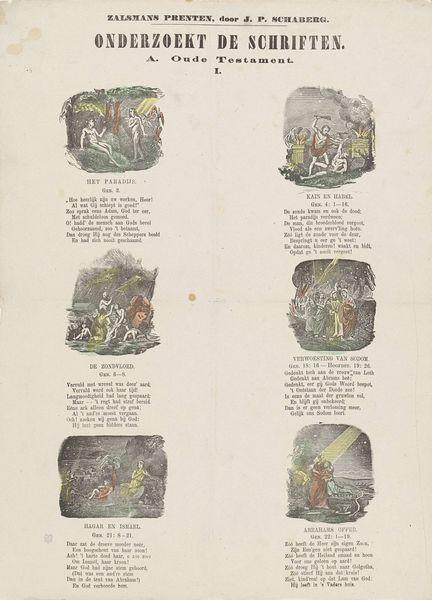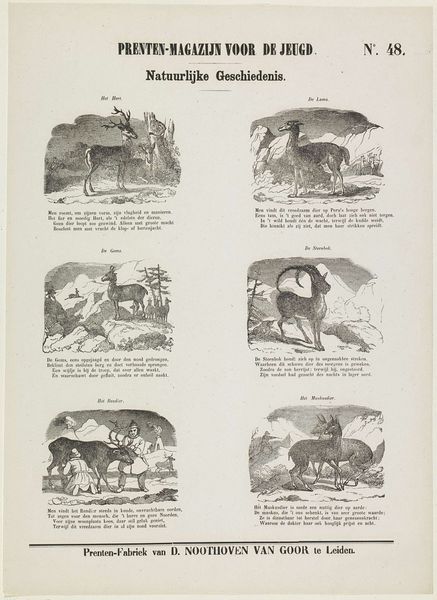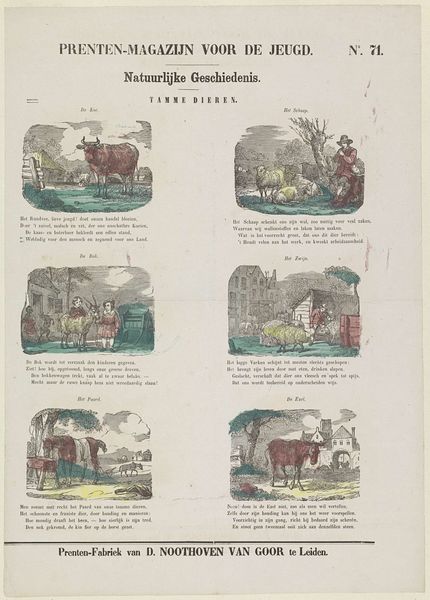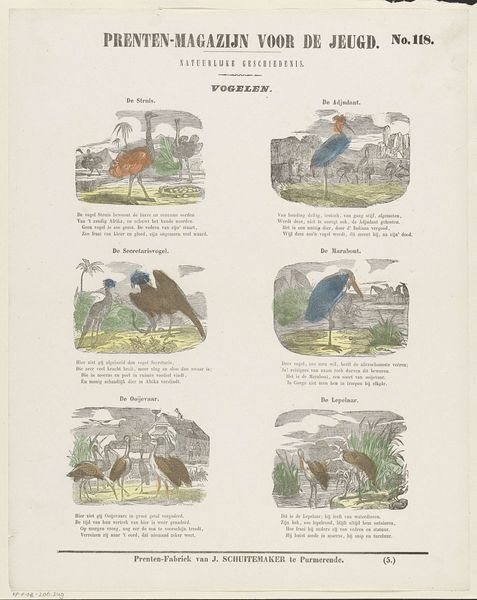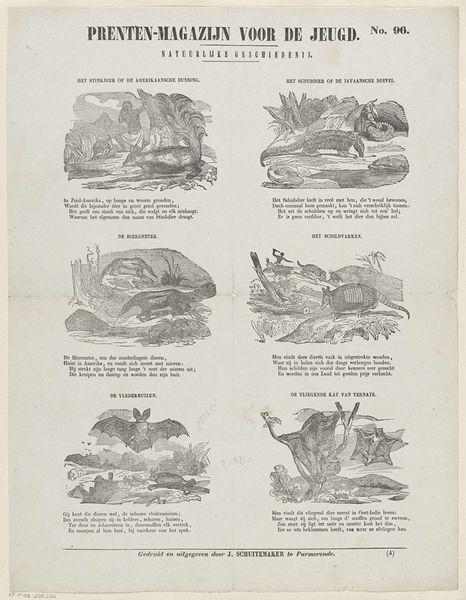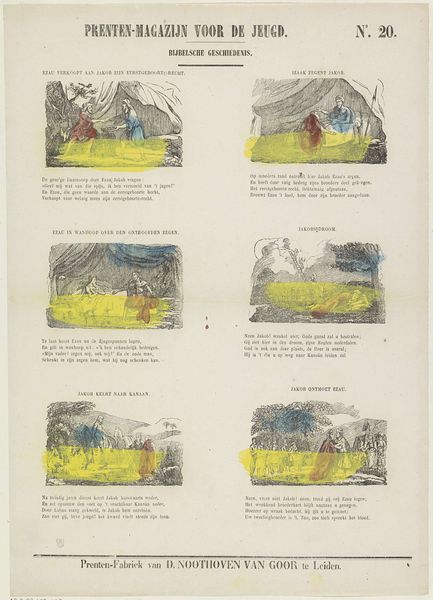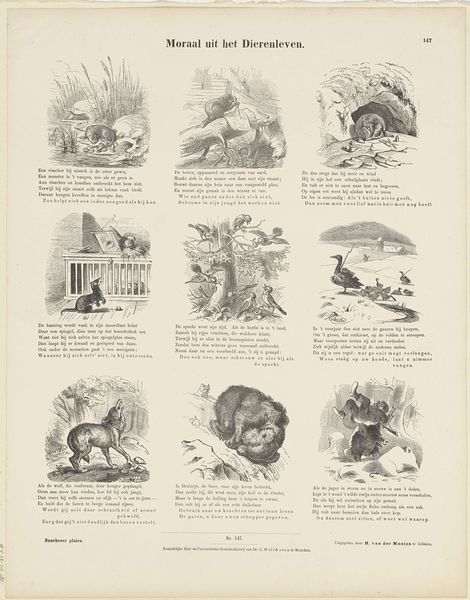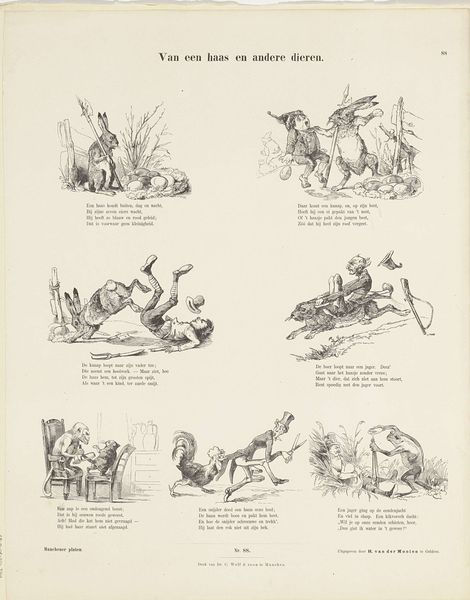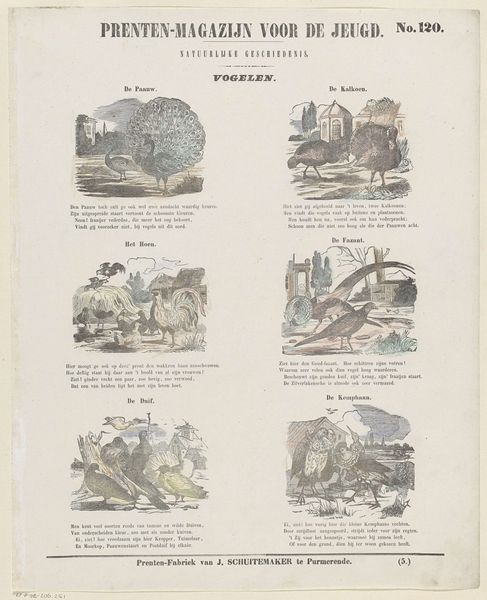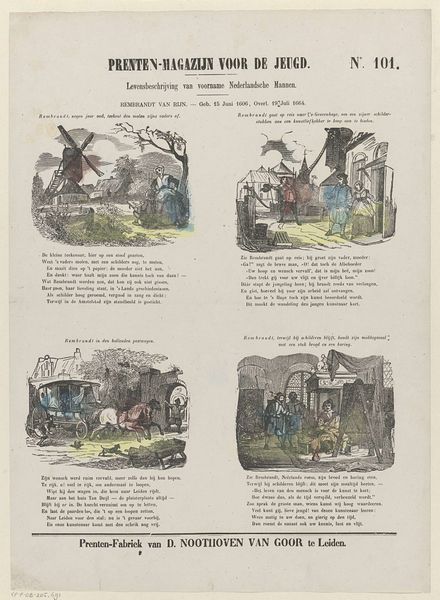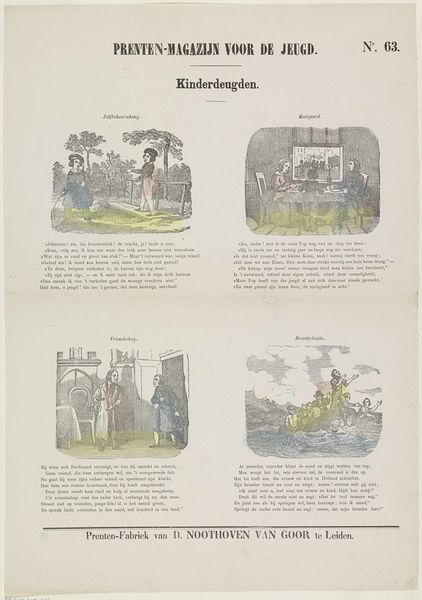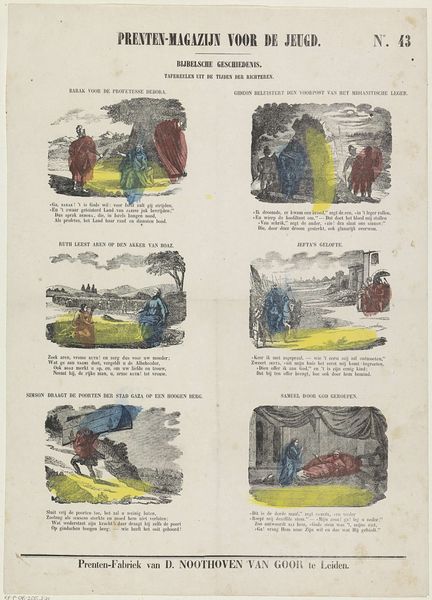
#
narrative-art
#
dutch-golden-age
# print
#
genre-painting
Dimensions: height 415 mm, width 306 mm
Copyright: Rijks Museum: Open Domain
Curator: Let’s take a look at this Dutch print entitled *Spreekwoorden*, or “Proverbs,” created by Dirk Noothoven van Goor between 1850 and 1881. It's a really intriguing example of narrative art from that era. Editor: Yes, and I immediately notice how accessible it appears. The material, probably an inexpensive print, would have been readily available. The layout feels like a children's book, inviting engagement rather than intimidating with grand artistic statements. Curator: Precisely. The print brings together several small scenes, each illustrating a different proverb. These visual metaphors are meant to impart wisdom, acting as cultural touchstones for the viewer. It’s fascinating to consider how deeply ingrained these sayings were in Dutch society at the time. Editor: Agreed. The means of production tells a story. It’s not just the proverbs themselves, but the act of printing them en masse that reveals something about the societal values and how information circulated. Think about the workshop creating these: the labour involved, the role of printed images as conveyors of meaning… Curator: You’re highlighting an interesting angle: the print serving as a means of reinforcing and perpetuating cultural knowledge. The specific proverbs that were chosen— what does that tell us about the anxieties and aspirations of the time? I read the illustration of a hunter surrounded by sheep as a warning about leading by blind faith; following trends could lead to one’s undoing. Editor: The simplification is key. To ensure the images are easily 'readable,' the artist streamlines them to deliver clear instructions: to accept societal wisdom without further questions. That simplification must involve efficiency and a certain exploitation of resources at some level to get the 'message' out effectively. Curator: Exactly, but these simple depictions can also operate in multilayered, profound ways. They reflect not just morals, but also desires. So it’s worth pondering upon why particular maxims resonate in a community or period—which speaks to broader anxieties or yearnings. Editor: From a production and consumer angle, examining material output can reveal a rich story. As for its resonance and transmission of meaning in a specific culture and time, that is the other half of it. Together, they give us a great and rich snapshot to think through!
Comments
No comments
Be the first to comment and join the conversation on the ultimate creative platform.
